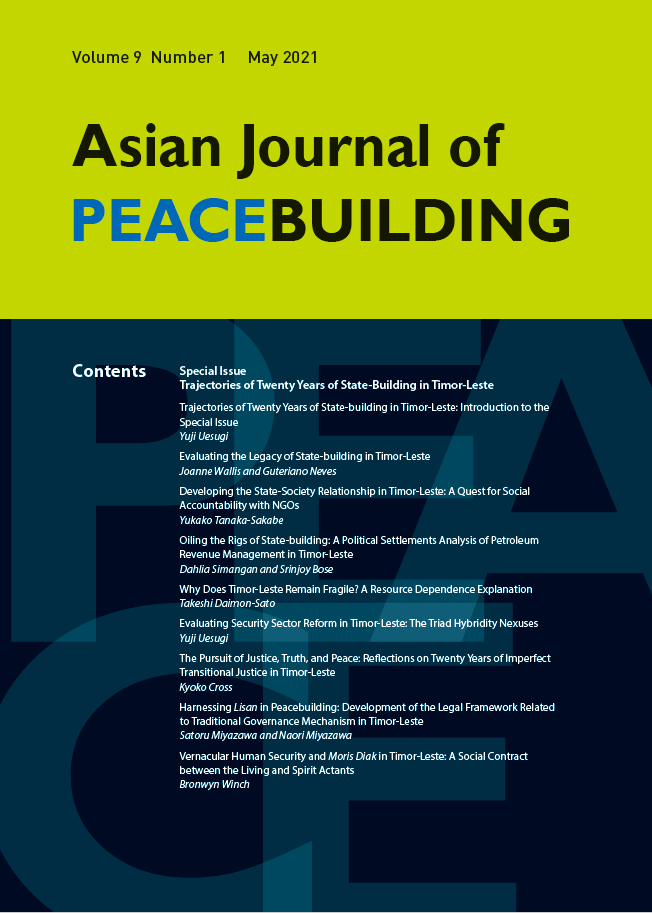Timor-Leste will celebrate the twentieth anniversary of its independence on May 20, 2022. As we approach this milestone, it is worthwhile to look back on the history of Timor-Leste’s state-building, examining the efforts of its governmentand people and the roles played by the international community. In this special issue, twenty years of state-building in Timor-Leste is examined, from the preindependence period, when the foundations and basic frameworks of the state were envisaged and laid out by the United Nations (UN), up to the present. In those two decades, a wide range of state-building initiatives were implemented. For example, a series of elections were held, including the 2001 election for a constitutional assembly, presidential elections (in 2002, 2007, 2012, and 2017), general elections (in 2007, 2012, 2017, and 2018), and elections of suco (village) chiefs and councils (in 2004-5, 2009, and 2016). The constitution and other laws, including the law on the veterans’ pension scheme, were drafted and enacted, the parliament was inaugurated, and national languages and a currency were selected. Statutory institutions such as the Falintil Defense Force of Timor-Leste (F-FDTL), the National Police Force of Timor-Leste (PNTL), the public administration, the suco councils, and the Petroleum Fund were established. The recruiting and training of civil servants was carried out. In addition, directions and visions for state-building were set, including the establishment of national symbols for integration and nationally shared myths through the construction of the resistance museum and the memorial to heroes (and victims), commemorating their suffering and devotion to the liberation struggle.
Back Issues
Special Issue: Trajectories of Twenty Years of State-building in Timor-Leste
Introduction
Yuji Uesugi pp. 1-18
PDF Download

